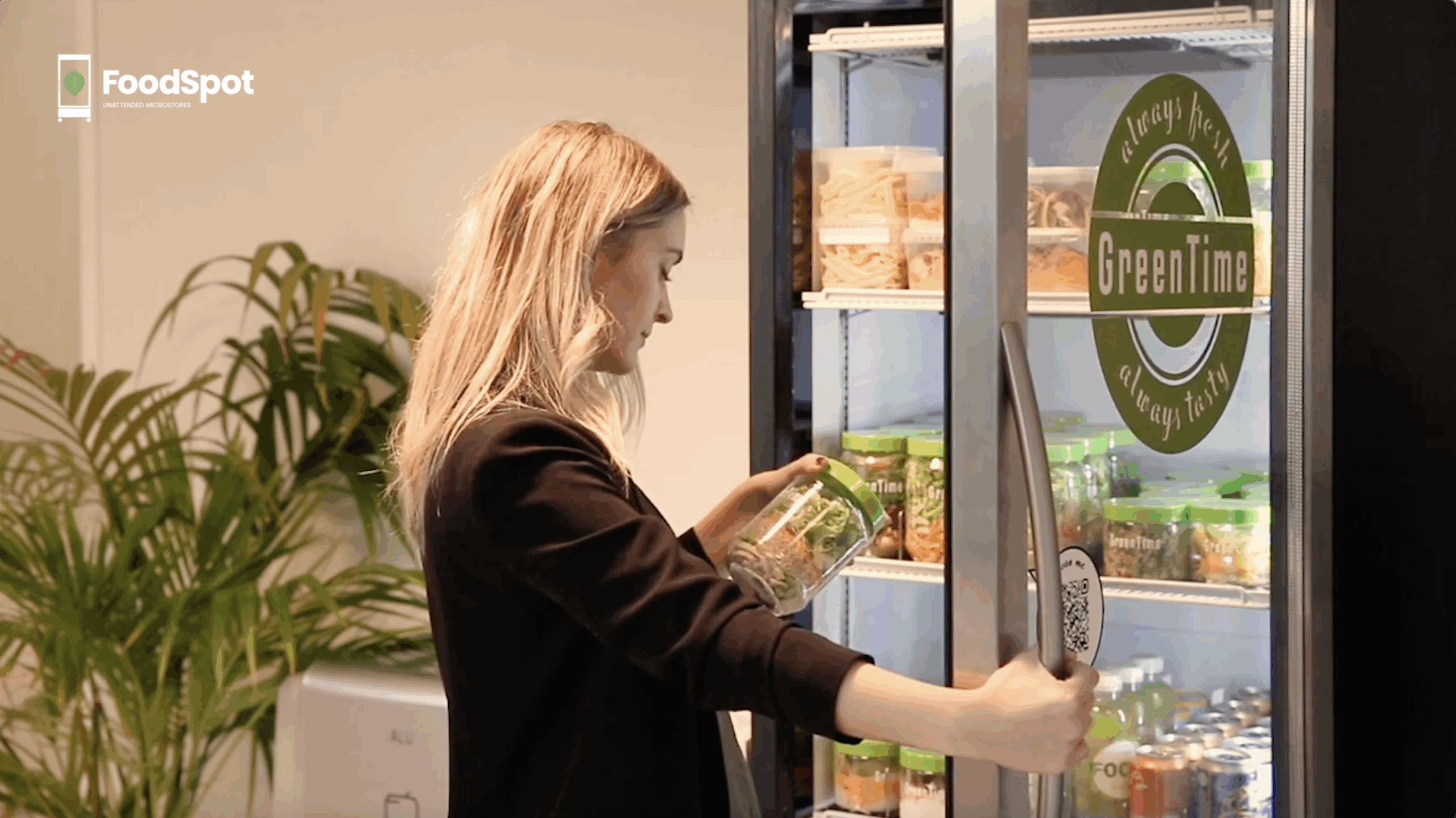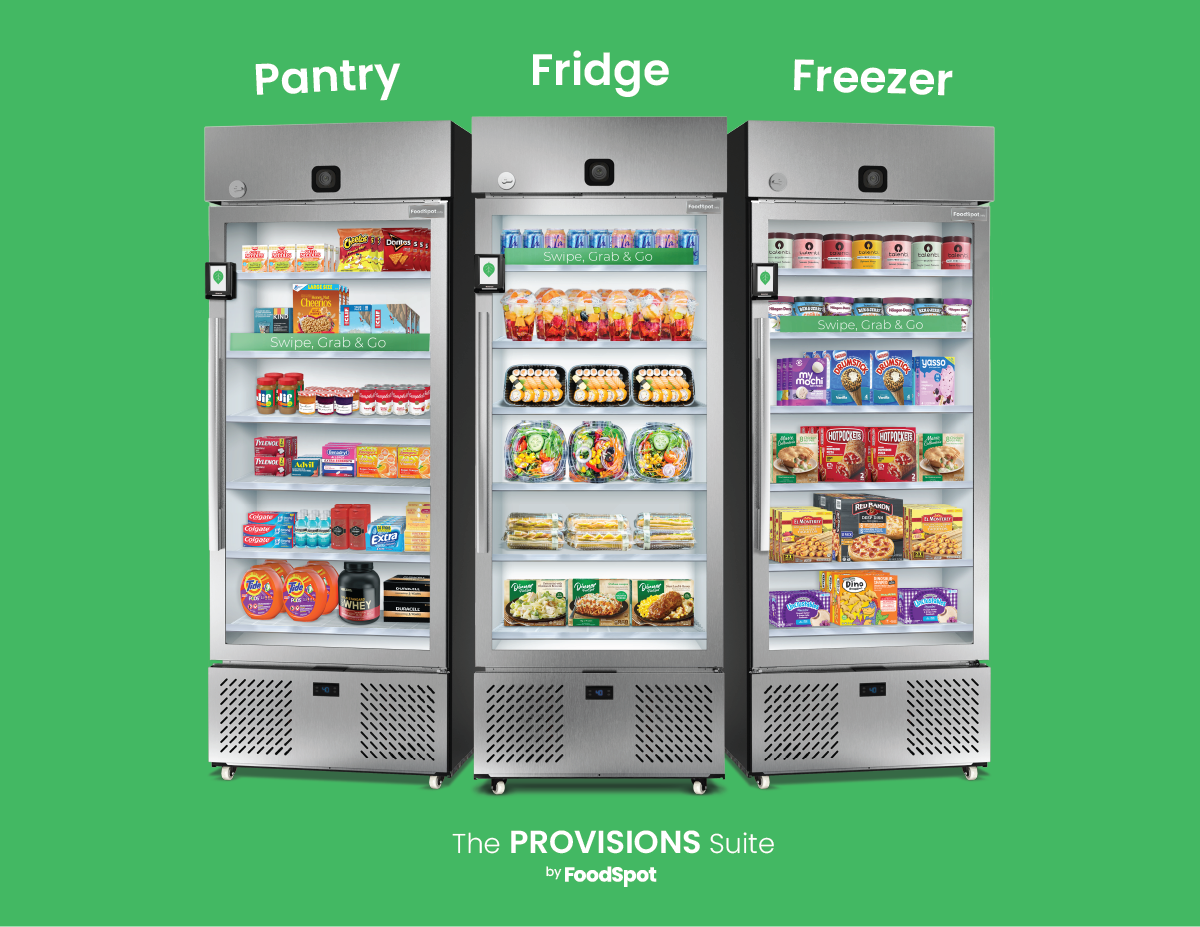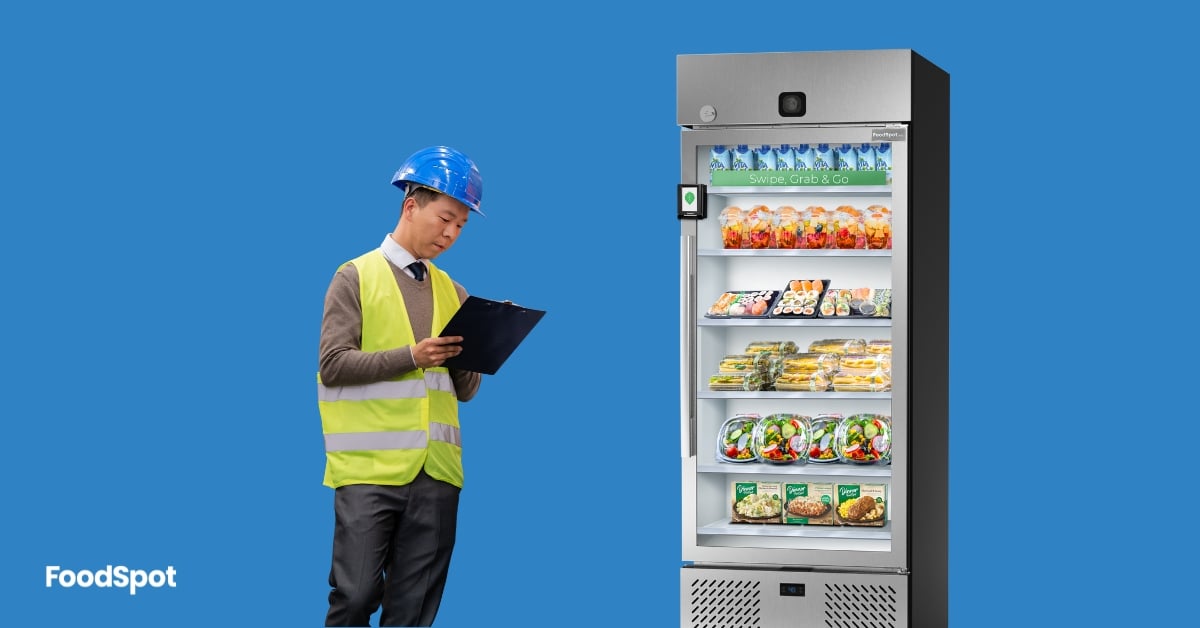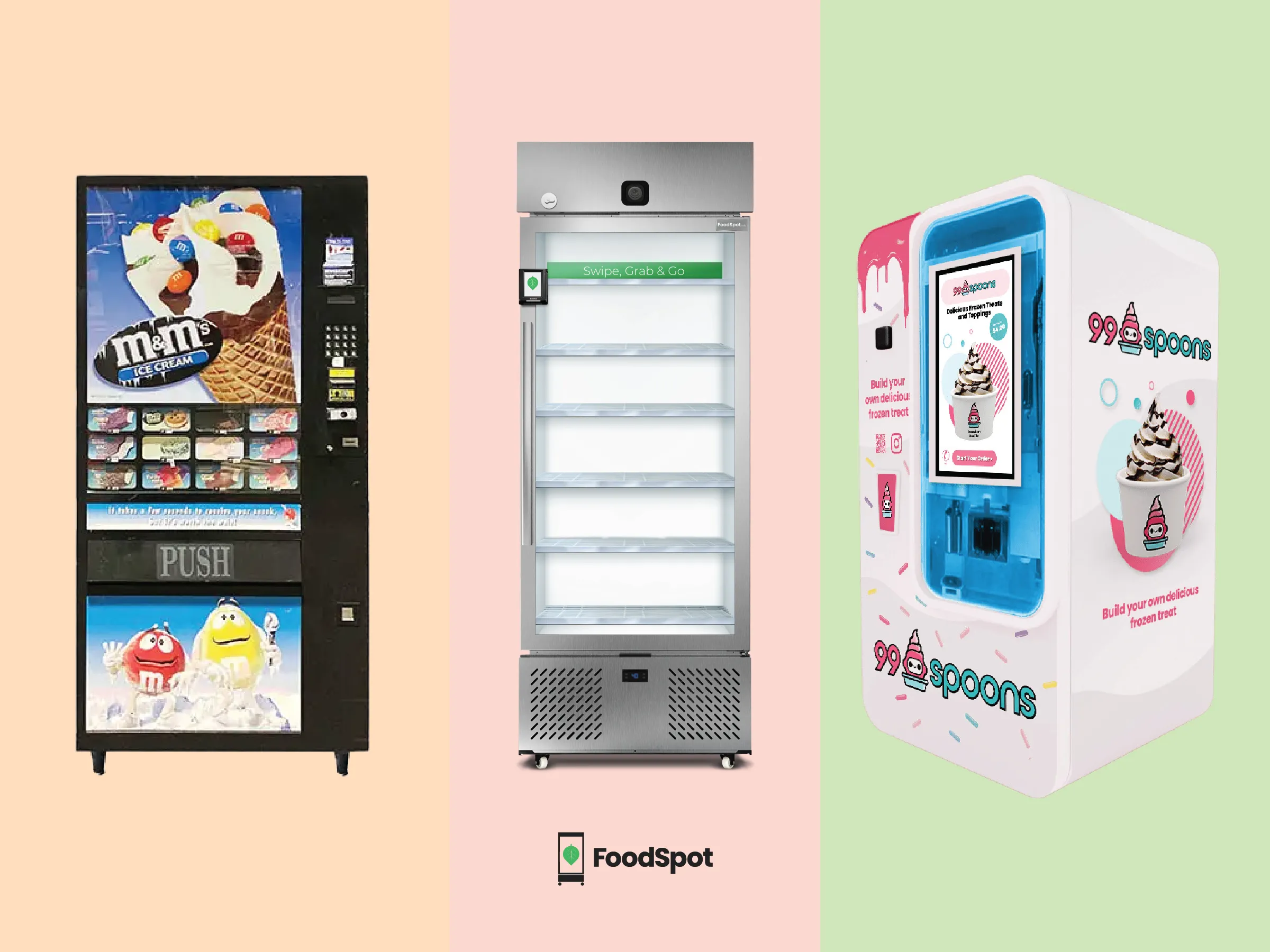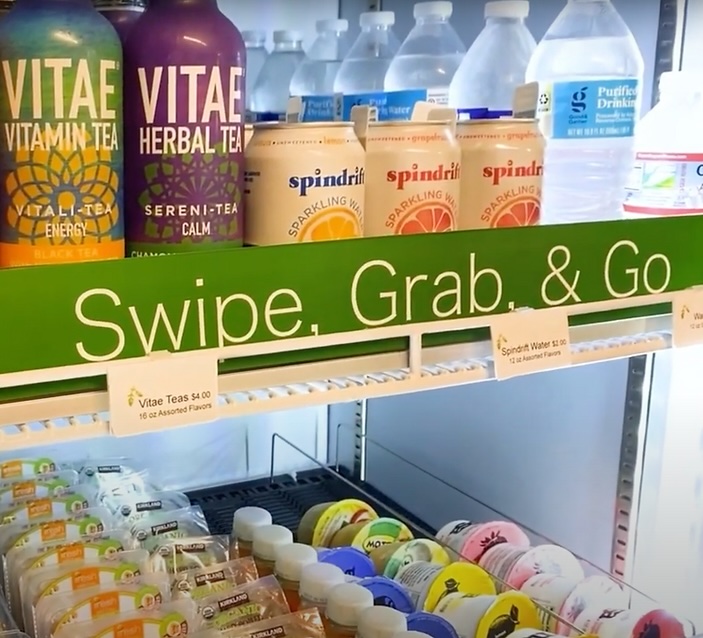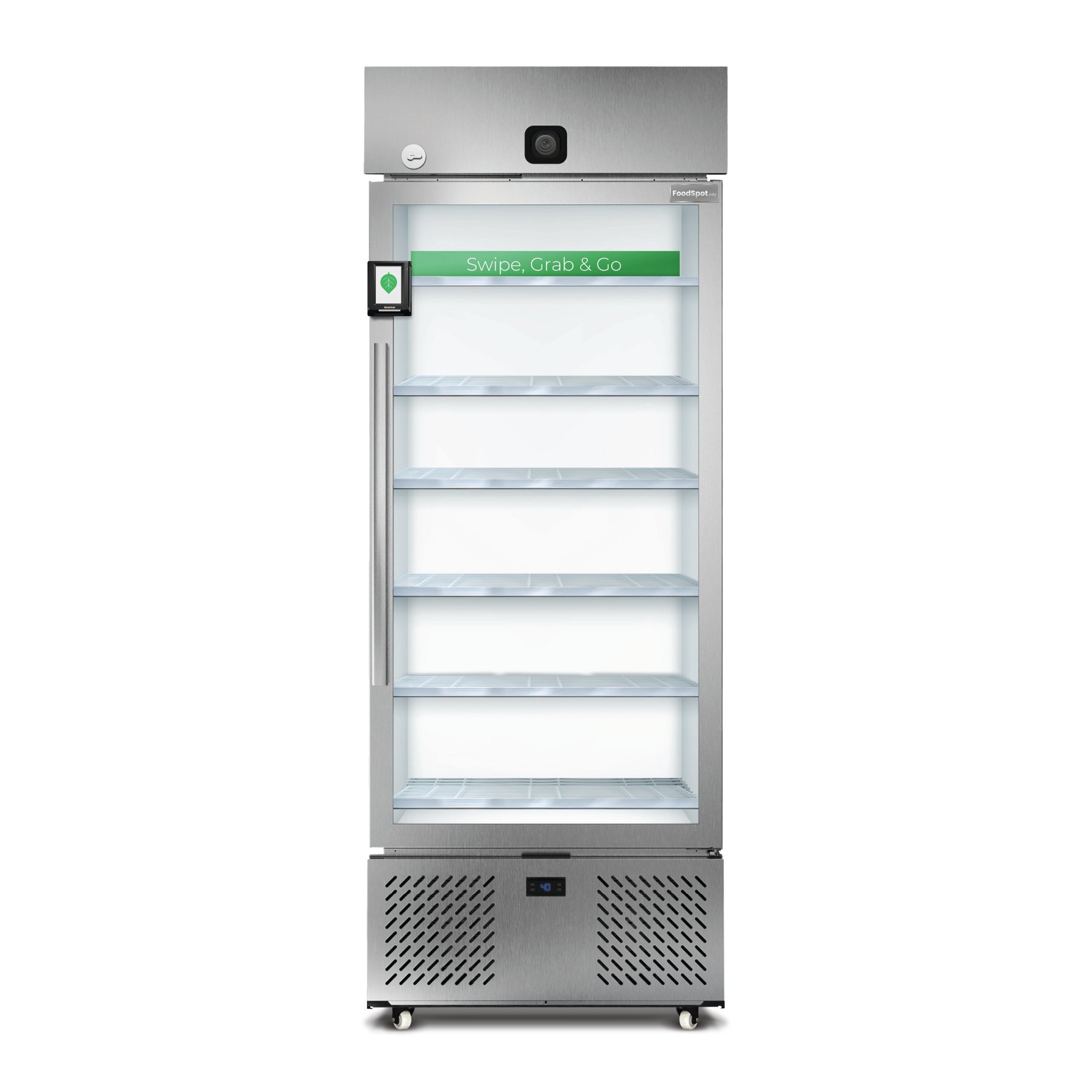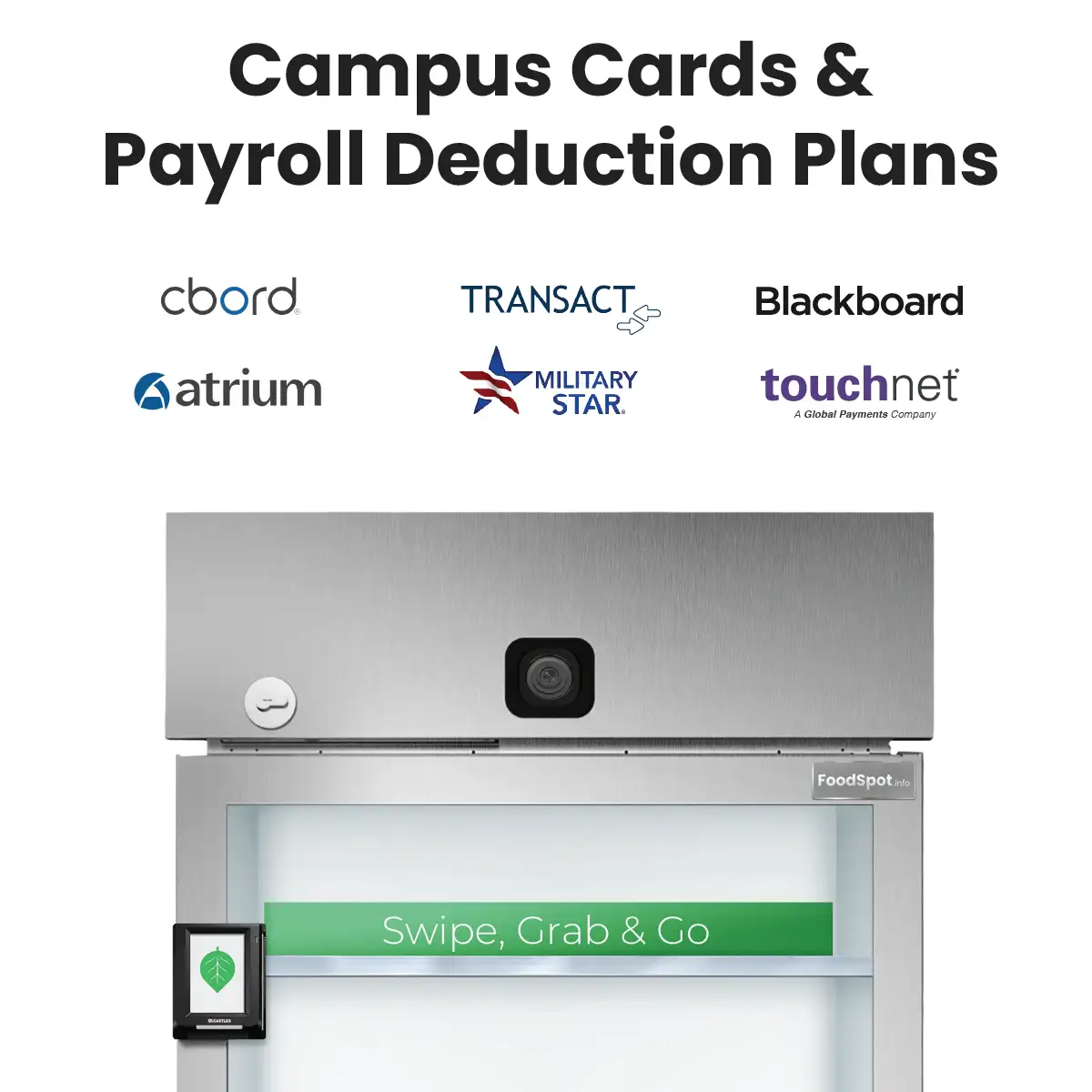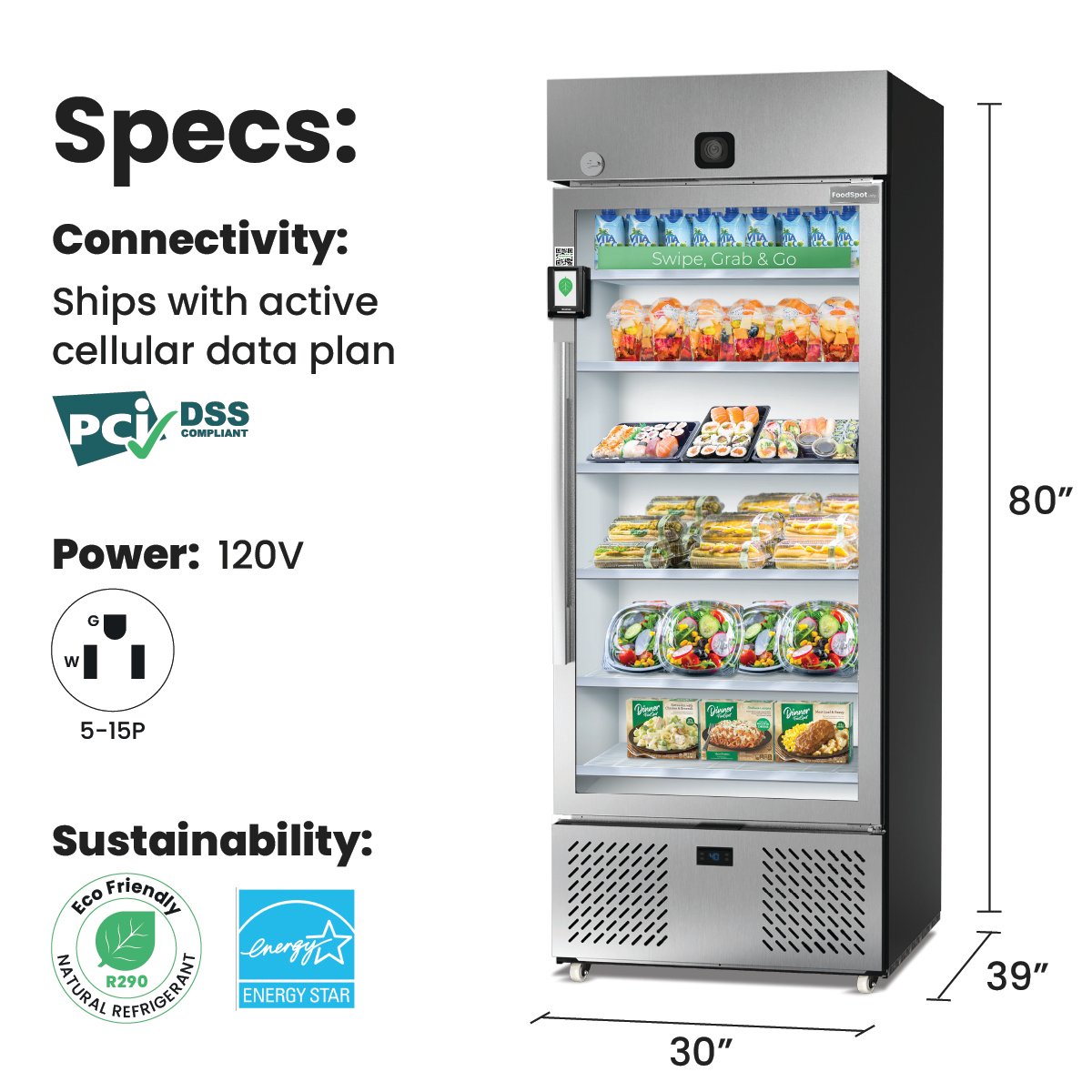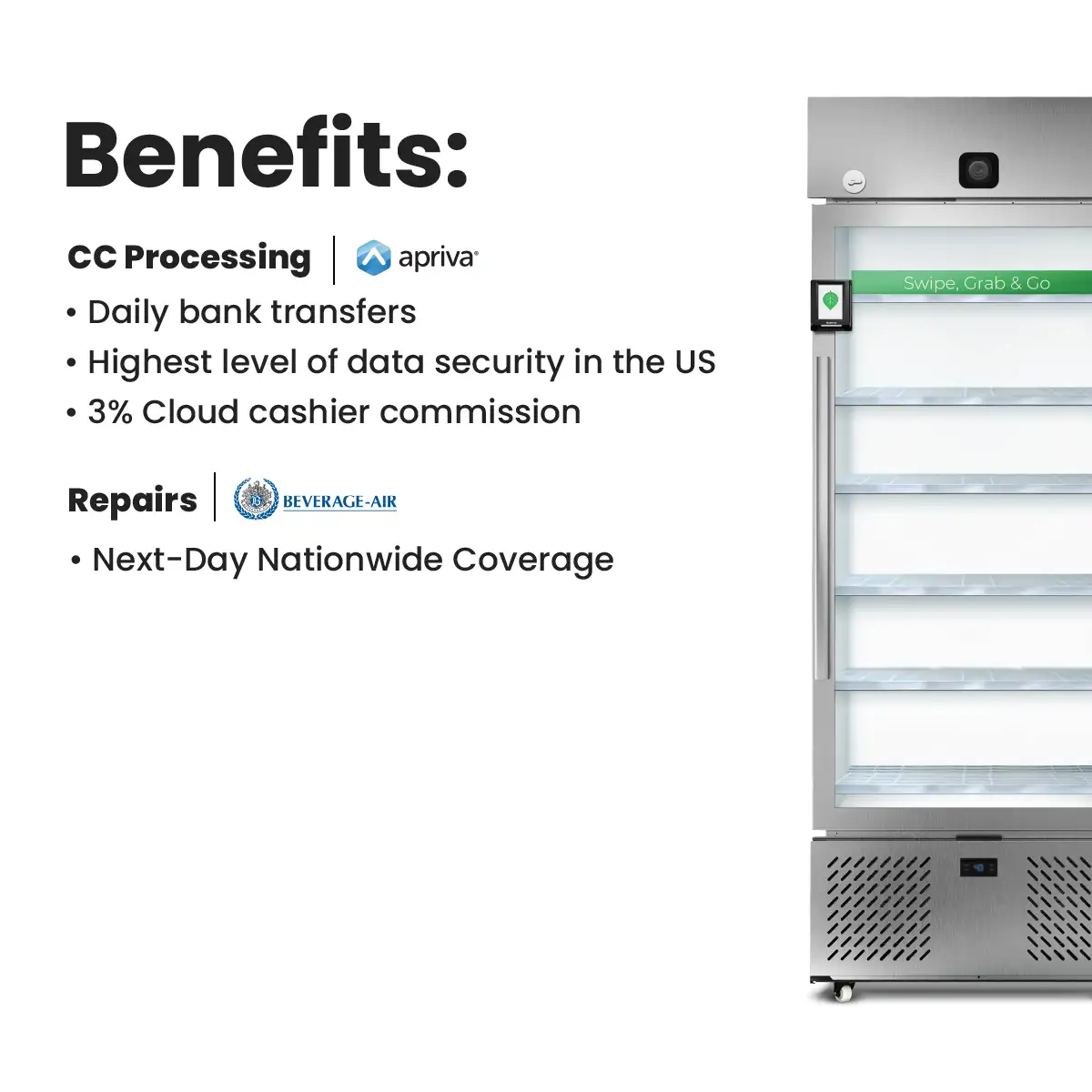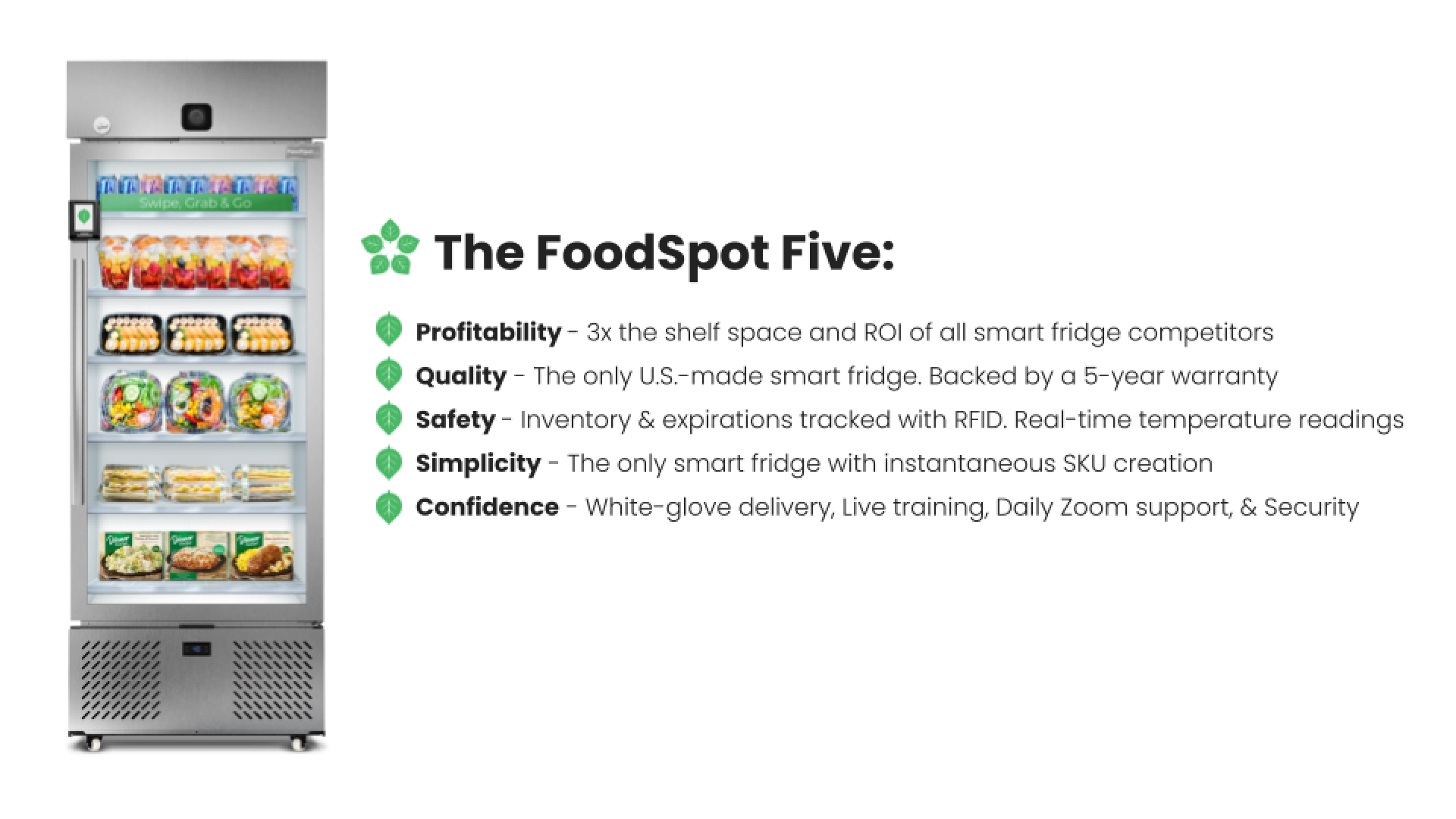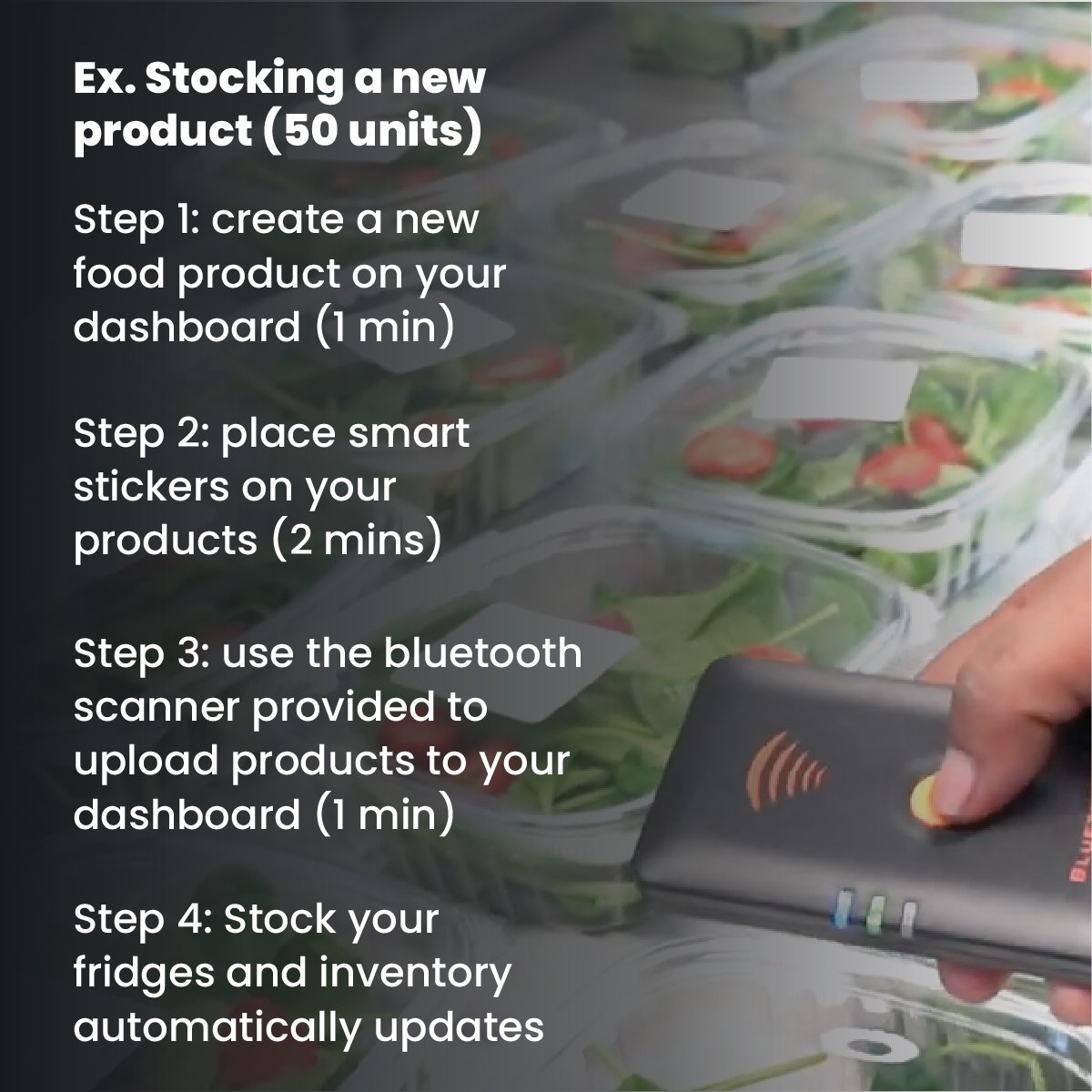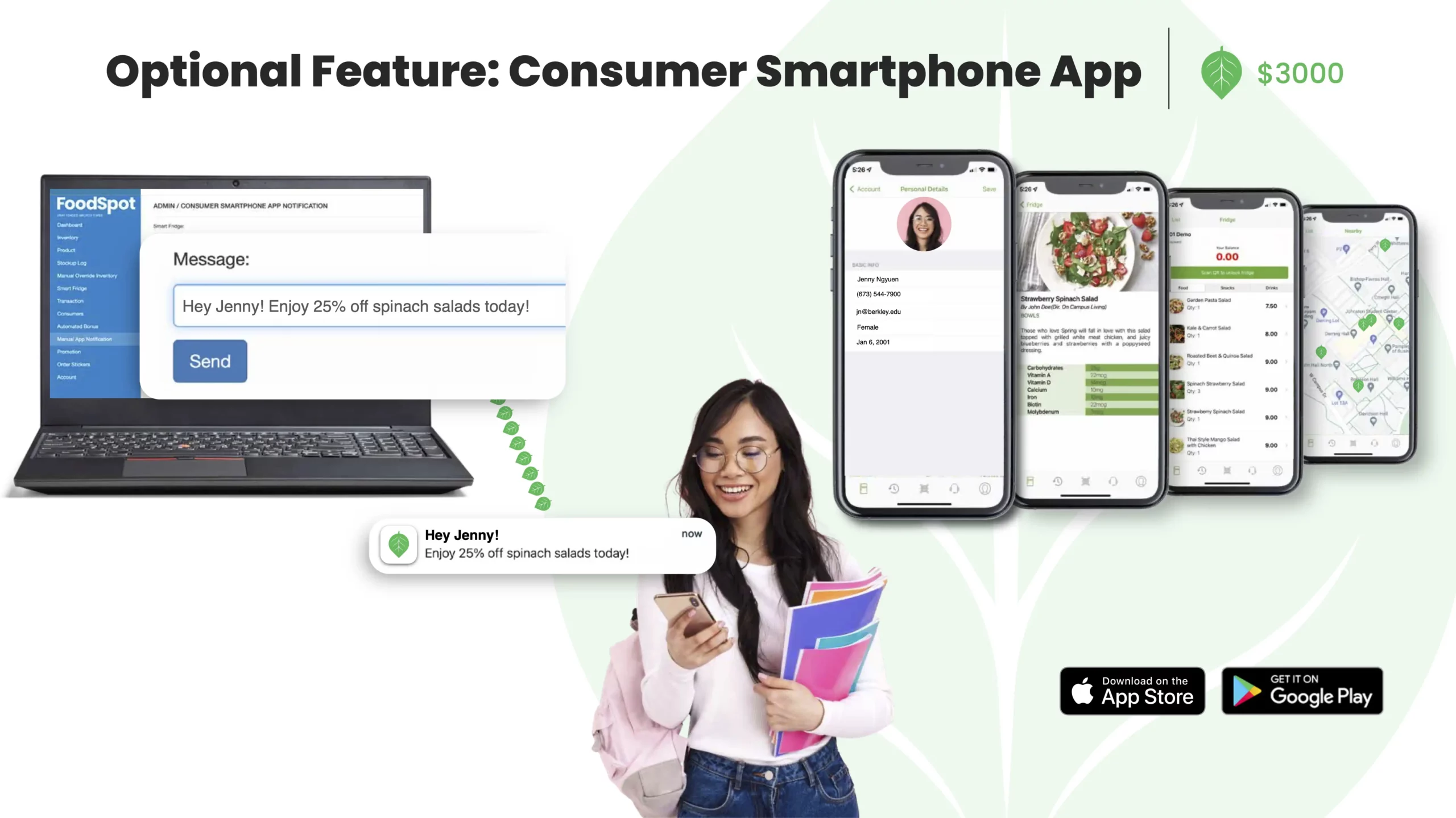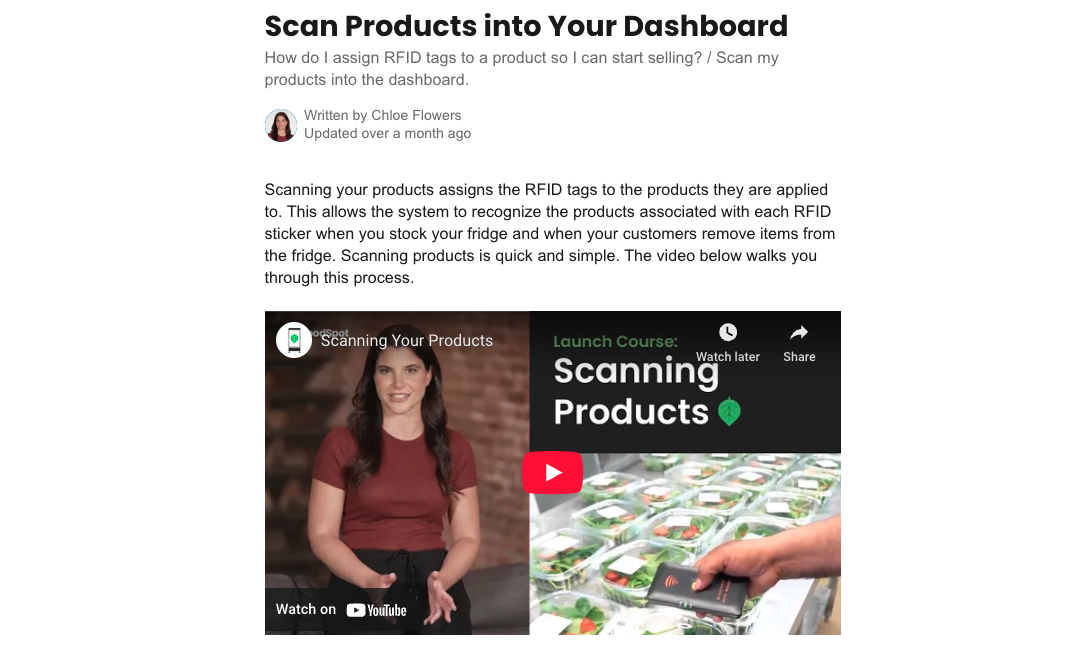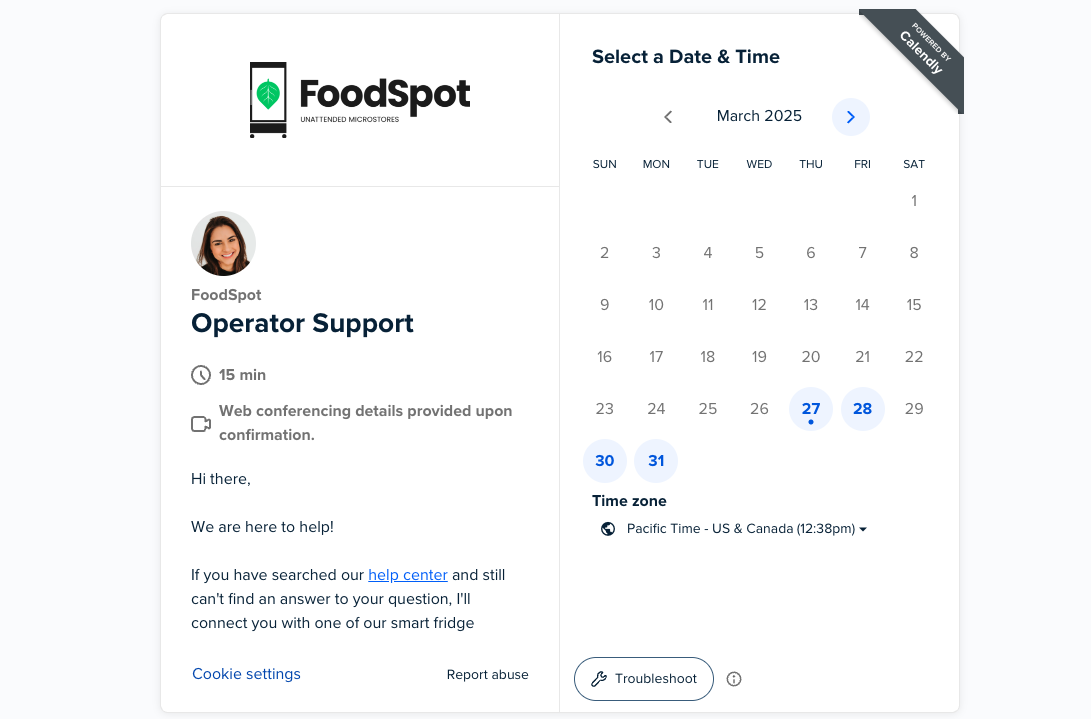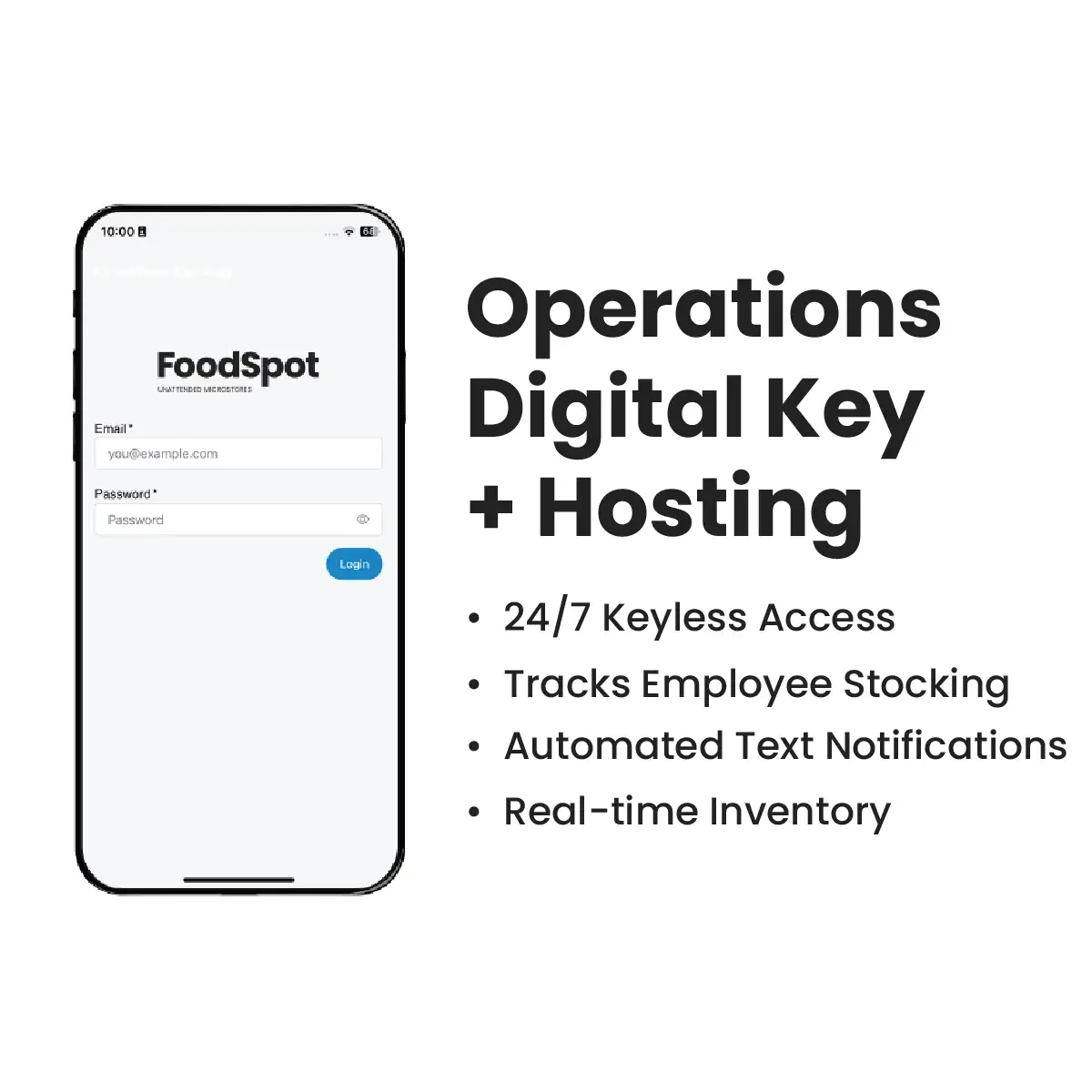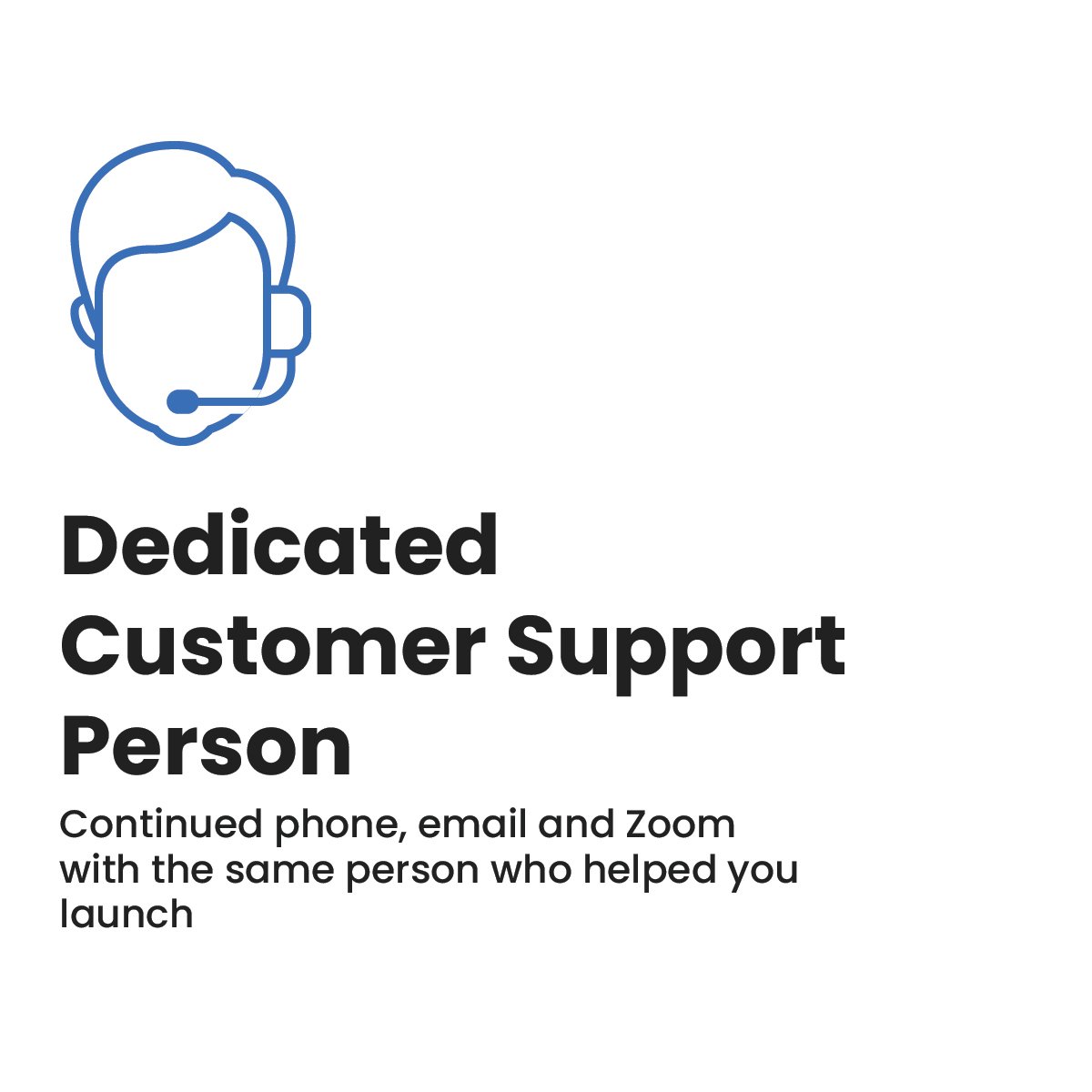Smart coolers are meeting the growing consumer demand for healthy, convenient food options while sheltering operators from rising overhead costs. You may have seen them in airports, gyms, campuses, or other environments where there is a need for 24/7 fresh food access. For the uninitiated, the world of unattended retail coolers can be confusing, so we’ll break down the different types of smart coolers to help you make the best decision for your food business.
What is a smart cooler?
Smart coolers are mini storefronts that securely sell your fresh food 24/7. A smart cooler typically takes the form of a refrigerated merchandiser with smart inventory tracking, allowing the customer to swipe their card to unlock, grab what they want, and be on their way.
Some coolers require you to ring up your items. These honor-system solutions cannot be fully public-facing, so we’ll focus on secure smart coolers here. Secure smart coolers can be placed in public, highly-trafficked locations where people need it most—a nurse on the night shift, a student up late studying on campus, or a traveler after a late flight.
Smart coolers grew in popularity as consumers began demanding restaurant-quality fresh food at the convenience of a vending machine. With growing overhead and labor costs, foodservice operators needed a way to meet this demand without destroying their margins. Smart coolers allowed them to open mini, unattended retail locations in busy buildings at a fraction of the cost of a fully-staffed 24-hour storefront. Importantly, smart vending coolers provide
- Peace of mind for the operator, who can view activity from a remote dashboard
- Confidence for the customer, who can inspect the food before purchasing
As the appetite for smart coolers grows, it’s important for food operators to understand the different types of solutions to make an informed decision for their business.
The 3 Types of Smart Coolers Explained
Computer Vision
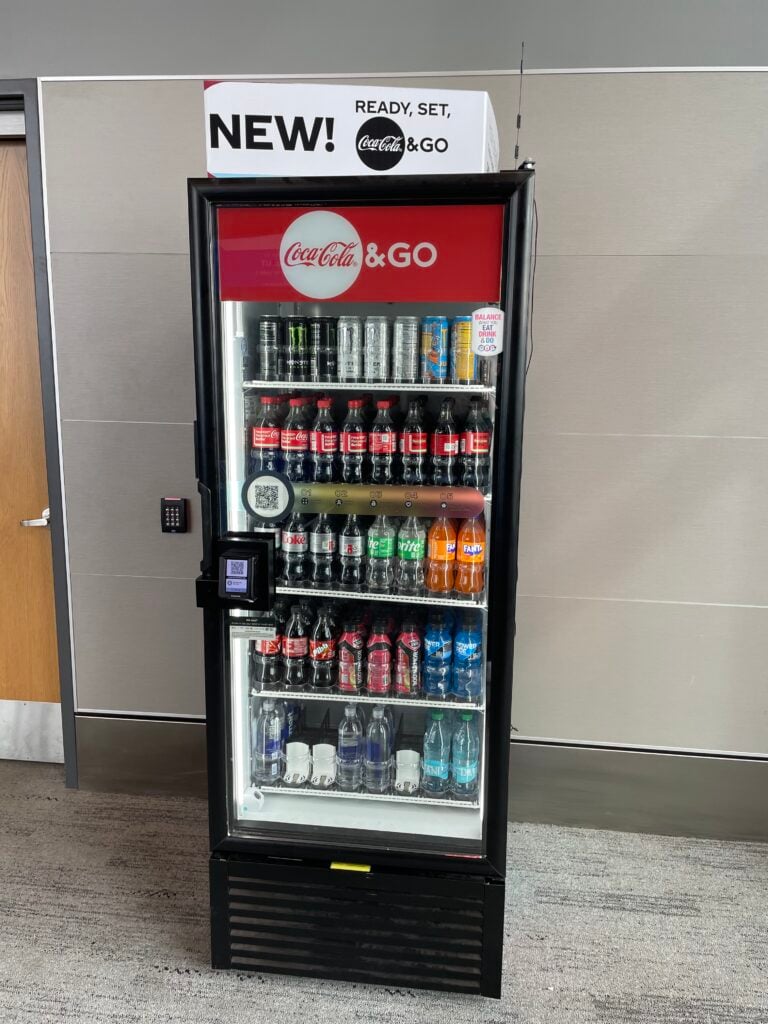
Computer Vision smart fridges use cameras mounted around the opening of the fridge to detect what items have been taken. Based on the current state of the technology, these smart coolers can only be stocked with highly uniform products, like soda bottles or chips.
Weight-Based
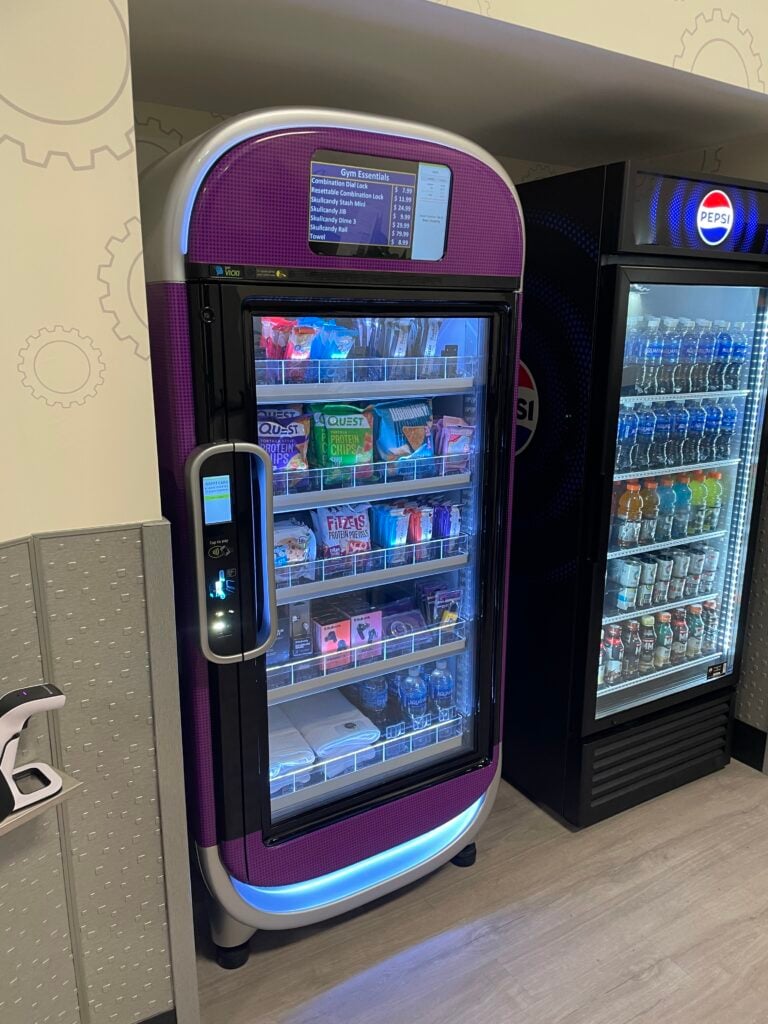
Weight-based smart fridges use scales on each shelf to detect what items have been taken. For example, if an operator wants to sell Snickers bars on a given shelf, they would need to calibrate the fridge to charge the customer for a Snickers every time that scale detected a decrease of 1.86 ounces. As such, weight-based smart coolers are good for products with highly consistent weights, like candy bars.
RFID

RFID smart coolers have sensors that read RFID stickers on each product, so product appearance and weight don’t limit the offering. Because each product is tagged with a sticker, the operator can see individual expiration dates remotely from their dashboard. This elevated food safety feature coupled with the infinite possibility of product offerings make RFID smart fridges the best solution for selling restaurant-quality fresh food, like a spicy tuna roll, an asiago caesar salad, or a slice of German chocolate cake.
A Summary of Smart Cooler Technologies
| Product | Complexity | Hardware Price | Daily Sales* | |
| Computer Vision | Drinks, chips, candy | Low | $3,000–$5,000 | $5–$40 |
| Weight-Based | + Convenience store food | High | $11,000–$18,000 | $15–$50 |
| RFID | + Sushi, salads, entrees, desserts, … | Medium | $5,000–$10,000 | $20–$500+ |
*Sales are highly dependent on location, shelf space, and merchandising strategy
Choosing the best smart cooler for your food business
Here are some questions you should ask yourself and smart cooler providers when researching the best solution for your business:
- Product mix: What am I selling? This will determine the type of technology you need.
- Shelf space: How much volume am I planning to sell? How frequently will I be able to stock the cooler?
- Quality: What aesthetic represents my brand best? Where is the fridge manufactured? Is it durable? Is there a warranty? Durability and aesthetics matter more in a public lobby than in a private employee break room.
- Support: How will my team be trained on how to use it? What happens if the machine goes down? Some providers solely sell you equipment, while others partner in your success.
- Software: What cashless payment integrations are compatible with the cooler (i.e. campus card, employee badge…)? What data insights does the dashboard provide?
Closing sentiments
The U.S. is adopting smart coolers faster than ever. As you decide which smart cooler to launch for your business, rest assured that asking the questions above will help you find the right partner. If you’re a gym that only needs to sell drinks and protein bars, a weight-based solution may be good for you. If you’re a campus hoping to sell entrees in the freshmen dorm, RFID is the clear option due to product versatility and food safety.
The best way to choose the right solution is to book a meeting with the smart cooler company. At FoodSpot, we talk to operators every day about their goals for launching a smart cooler, and we’ve designed our hardware, software, and support to reflect a dedicated partnership. If you’d like to discuss your smart fridge goals with one of our smart vending experts, feel free to book some time with us here!

